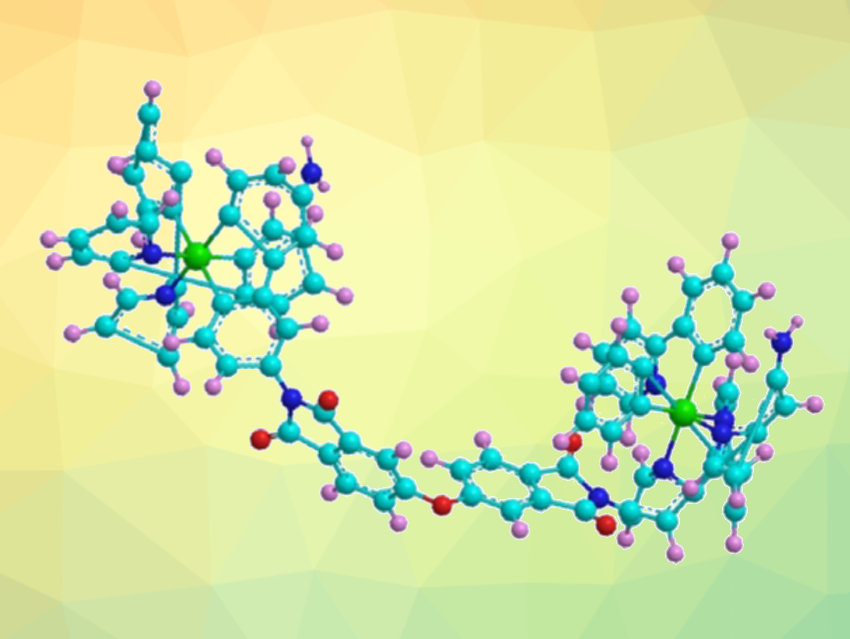Iridium complexes can be useful, e.g., as photosensitizers in photocatalytic water splitting due to their excellent photophysical properties. However, constructing iridium-based photosensitizers with both long lifetimes and high activities can be challenging.
Ying Wang, Yifan Zhang, Pengyang Deng, University of Science and Technology of China, Hefei, and Changchun Institute of Applied Chemistry, Chinese Academy of Sciences, and colleagues have developed a simple strategy for constructing an oligomeric iridium-based photosensitizer to simultaneously improve stability and activity. The team synthesized a series of oligomeric Ir photosensitizers [Ir(ppy)2(dabpy)-ODPA]n (ppy = 2-phenylpyridine, dabpy = 4,4′-diamino-2,2′-bipyridine) by copolymerizing [Ir(ppy)2(dabpy)][PF6] with 4,4′-oxydiphthalic anhydride (ODPA).
The oligomeric Ir photosensitizers with optimal performance have a photocatalytic lifetime of 676 h and the hydrogen evolution reaches 162055.1 μmol g–1. The photocatalytic lifetime of the oligomer is ca. 38 times that of the corresponding monomeric Ir complex, and the activity is 1.3 times higher. According to the researchers, the enhanced photocatalytic performance stems from the oligomeric structure. In the oligomer, steric hindrance reduces undesired photoinduced decomposition. In addition, the possible coupling of adjacent Ir complexes in the oligomers increases the utilization of visible light and improves the activity.
- A simple strategy to simultaneously improve the lifetime and activity of classical iridium complex for photocatalytic water‐splitting,
Yifan Huang, Yue Wang, Shuang Chen, Jian Gao, Ying Wang, Yifan Zhang, Pengyang Deng,
Aggregate 2023.
https://doi.org/10.1002/agt2.335




